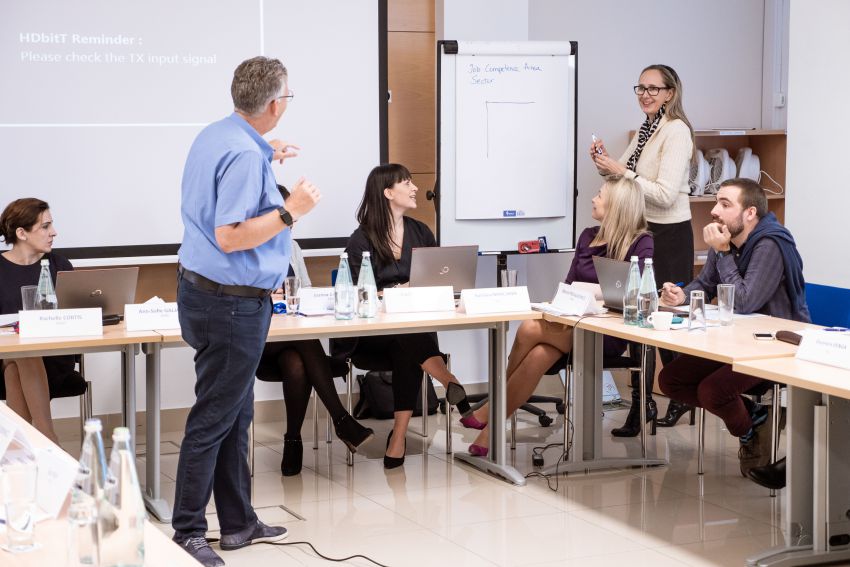Everything we do is focused on preparing learners to perform their day-to-day duties and tasks. We identify training needs using a competency framework which also informs the design, development, and delivery of training.

Identifying training needs
With the support of Member States, we have mapped all the specific tasks carried out by our learners and defined the learning (knowledge, skills, responsibility and autonomy) that they require to perform their specific duties effectively.
The resulting European Qualifications Framework for Asylum and Reception Officials (ESQF), provides the foundation for applying a structured approach for designing and delivering fit-for-purpose training. By defining the outcomes of the learning, it enables a fully outcomes-based approach that puts the learner at the centre of their learning journey.
The EUAA Training Needs Analysis Tool (ETNAT) is an application that will enable users to map learning pathways. The tool was successfully piloted with Member States in 2020/2021 and the full version is under development.
Since the agency took over responsibility for the European Asylum Curriculum in 2012, we have always followed a blended-learning methodology. Currently, we offer a range of delivery methods: online studies; face-to-face sessions facilitated by a trainer; webinars, and on-the-job coaching. These delivery methods are often combined to enable learners to acquire knowledge, practice skills as well gain the required level of responsibility and autonomy. Online studies are available on our Learning Management System.
The EUAA on-the-job coaching method is directly concerned with the improvement of performance and further development of skills through experiential learning. Coaching is based on the tasks performed by the asylum officials themselves. This gives them the opportunity to discuss the challenges they have dealt with, receive feedback, and clarify topics that still remain unclear.
The coach is trained to identify the learner’s strong and weak points and set concrete goals. They guide their learners to increase their competences, commitment, and confidence.
We recognise the importance of the concept of lifelong learning particularly in its application to vocational training and we offer continuing professional development (CPD) to our trainers and learners to keep their knowledge, skills and competences up-to-date and relevant.

